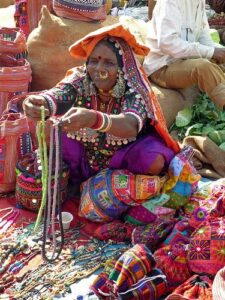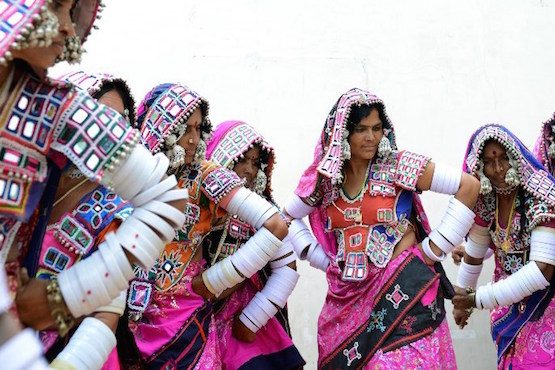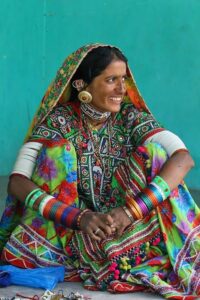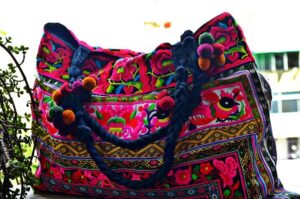Don’t underestimate anyone around you.
Everyone has the power to surprise anyone at any point of time.
The women you see in dangly embroidered clothes mostly at beachsides and places like Baga and Calangute have a name. They are called ‘ Banjaras ’ but locals call them ‘Jinga Maamis’.
Laman Banjaras originally hailed from an independent province called ‘Gor’ in Afghanistan. But later settled in Rajasthan and other parts of India including Goa.
They speak ‘Gor Boli’ also called Lambadi, belonging to the Indo-Aryan group of languages. If you have met or noticed any ‘banjara’ you may have realised that they speak different languages including English. Some are very fluent in Russian too. They pick up languages spoken in their surroundings quickly being a very smart group of people. It is a great advantage for them as they use it to commute with foreign tourists.
Their artwork is so rich and beautiful in many ways. Artworks such as textile embroidery, jewellery, tattooing, painting and also their folk dance & music. People didn’t think Banjara textiles would become a trend in this generation but it did.
The Banjara, Lambani women specialise in “lepo” embroidery. That involves stitching pieces of mirror, decorative beads, shells and coins onto clothes which have come in fashion now. Many fashionistas don beautiful ‘lepo’ embroidered clothes. And also jewellery with a modern touch. The ‘Sandur Lambani Embroidery’ is a type of textile embroidery, unique to the tribe in Sanduru, Bellary district in Karnataka.

Banjaras were traditional suppliers of bullocks, grain, firewood and were also salt merchants. The word ‘Banjaras’ is a part of a Sanskrit word ‘vana chara’ which means ‘wanderers in the jungle’. The word Lambani or Lamani also derived from a Sanskrit word ‘lavana’ meaning salt. It was the primary good that they exported across the country.
Banjaras are seen all over India but their population is mainly settled in the states of Rajasthan, Karnataka, Andhra Pradesh, Maharashtra and Telangana.
During the 18th Century, the British colonial authorities brought the community under the purview of Criminal Tribes Act of 1871. By enforcing this act, the British Raj restricted the movement of Banjara people.
The smirch attached to this continued until when the Act was abolished by the newly Independent India in 1952.






